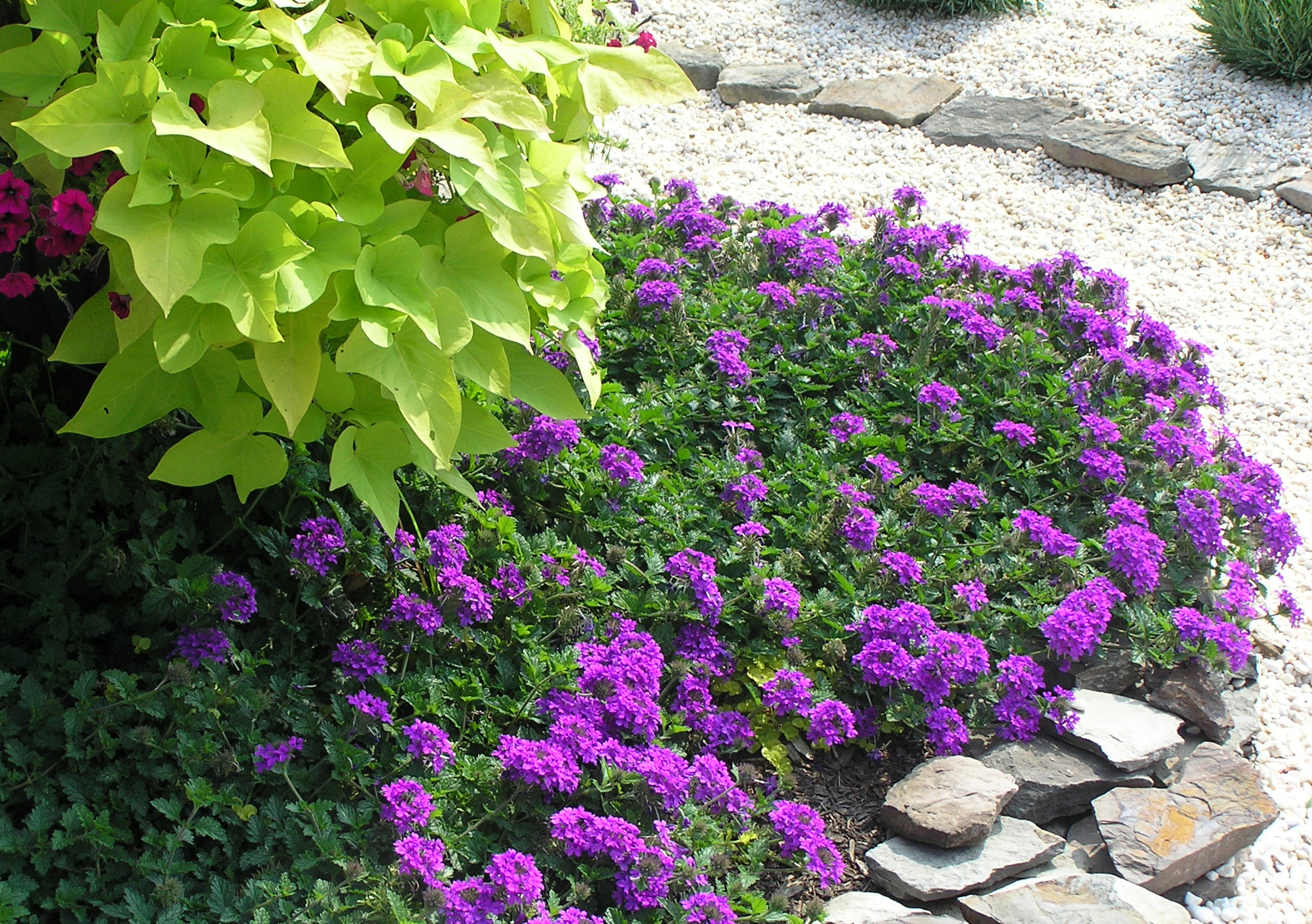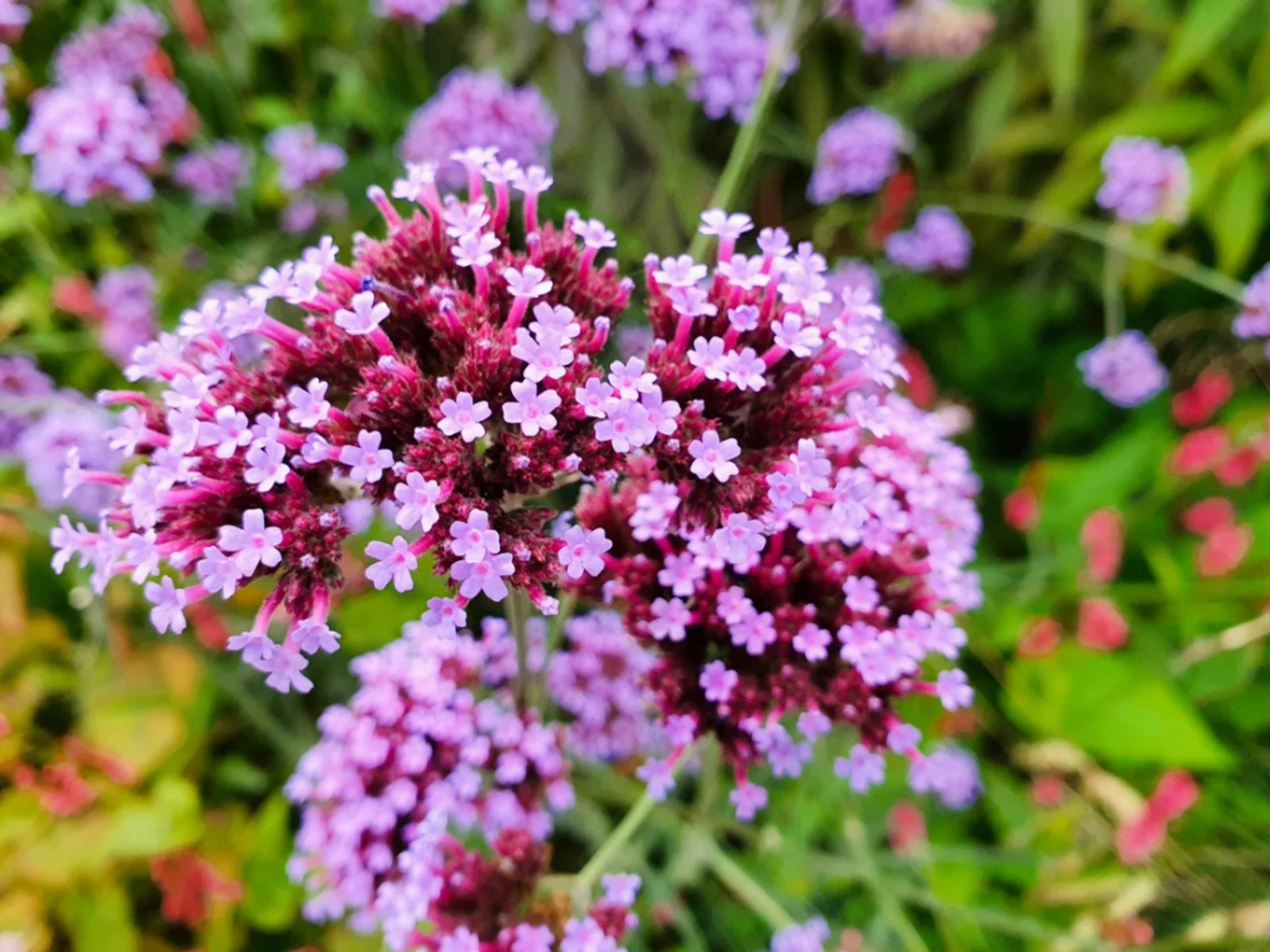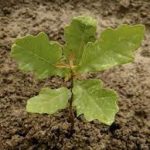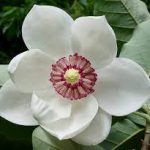A GUIDE TO GROWING & CARING FOR VERBENA
For an amazing display of color that lasts from the beginning of spring to frost, It’s impossible to beat these sun-loving, long-flowering plants vibrant, vigorous and adaptable Annual verbenas are one of my favourites to add a touch of va-va-voom to your garden in summer. They bloom all year long and have small nosegays that are brimming with vibrantly coloured flowers.

Zones:
Winter-hardy for zones 8 to 11. The garden verbenas ( Verbena hybrid) are planted annually in all climates.
Bloom season:
From May to the end of October.
The sun and soil needs:
Full daytime sun (at least 8 hours per day) and well-drained soil.
Height/spread:
The height of the varieties varies from low-growing and trailing up to slightly upright.
Colours and traits:
Common garden varieties feature small, fragrant flowers that are placed in clusters of saucers, with a diameter of up to 3 inches. The most commonly used flower colours include red, pink, blue-violet, and bicoloured varieties.
Attracts:
Verbena’s fragrant and colourful flowers offer a wealth of nectar for pollinators attracting bees, hummingbirds and a variety of butterflies.
TYPES OF VERBENA
Superbena(r) series:
Verbena hybrids developed through the Proved Winners(r) have been proven to be stronger, resistant to mildew, and more durable than previous varieties. They also have larger flowers in various colours, including bicoloured stripes.
Tapien(r) series:
Verbena trailing has the multi-branching habit of growth, growing up to 3 feet in height to form a dense carpet of flowers growing slowly. It is also resistant to mildew and grows well in various climates.
Lanai(r) series:
Semi-trailing Verbena is distinguished by striking patterns, vibrant shades, and contrasting eyes. It can spread about 2 to 3 feet and boasts among the most long blooming seasons. Smaller varieties with mounded habits are available.
HOW TO PLANT VERBENA?
Planting time:
Mid-spring or the beginning of summer, when the frost threat has gone.
Seeds from the beginning:
It is possible to grow specific varieties by seed. However, there are some non-seeding hybrids. Plant seeds indoors 8 to 10 weeks before the final date for frost in your region and then transplant them into outside beds after the soil is warm.
Water needs:
While established plants can withstand drought, they’ll do better with regular watering, specifically container-grown plants. Make sure that they have adequate drainage, whether in pots or garden beds, so that the roots don’t get soaked in the soil. For best results, combine them with other plants with similar requirements for water.
Fertilizing:
In the garden in the garden, using a continuously-release fertilizer and enriching the soil with organic matter before the moment of planting is likely to suffice. In other cases, you should fertilize your container-grown plants regularly with the help of water-soluble liquid fertilizer.
Deadheading and pruning:
While most don’t require deadheading to keep them in bloom, it is possible to trim the trailing plants if they are beginning to take over containers or overtake other plants in your garden. Please give them a cut every now and then to make them fuller and more prolific blooms.
TROUBLESHOOTING VERBENA
One of the least hassle-free flowering plants that you can cultivate, Verbena has some pests or diseases. When problems do arise, it is due mainly to a lack of sunlight or poorly-drained soil. Here are some signs of stress to look out for and possible solutions.
Plants that are leggy and have little blooms are usually the result of excessive shade. Transfer them to a place in your garden where they receive six or more hours of sunshine. Verbenas can recover when transplanted, and so do not be afraid to move your plants to a more suitable area.
Mildew with a powdery appearance is by far the most prevalent issue. Provide your plants with enough space to allow for air circulation, and to avoid watering high up. Do not water in the evening so that the leaves don’t get wet overnight. See: How to Get Rid of Powdery Mildew.
The yellowing of leaves, the poor flowering and root Rot are all indications of poor drainage. There are many ways to save your plants by moving them to areas with better drainage or raised beds. If you have plants that are grown in containers, make sure you have drainage holes.

Spider mites are among the pests that can pose an issue. If you see netting that resembles spider webs on your plants and your leaves are discolored, consider spraying the leaves with a powerful stream of water or an insecticidal detergent. Avoid using chemical insecticides as they can cause harm to pollinators. See: How to Control Spider Mites.
FREQUENTLY ASKED QUESTIONS
What is lemon Verbena?
A prevalent verbena species, lemon verbena ( Aloysia triphylla), actually belongs to an entirely different Genus. Its leaves emit an aroma of lemon when they are rubbed and are employed in aromatherapy products such as perfume, medicine, and even as a cooking herb.
What’s the deal with blue vervain?
Most well-known for its use as a herb for healing, blue vervain ( Verbena hastata) can grow from up to 6 feet tall and blooms from July through September. It develops colonies that spread slowly and self-seeds when it is in its natural habitat.
What is purple-top vervain?
There are also taller Verbena types ( Verbena bonariensis) which are also known as Brazilian vervain or purple top vervain. They are between 4 and five feet tall and are usually planted as an annual and produce 2-inch clusters of flowers on thin but strong stems. Tall Verbena can be vigorous self-sowing plants. However, modern cultivars, like Meteor Shower(r), are designed to be more tolerant.





